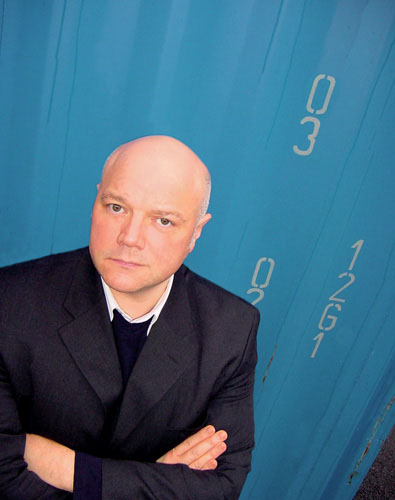Bigger isn’t always best
Large design groups aren’t the well-oiled machines they claim to be, and don’t meet the needs of a fast-moving business environment
Bang bang boom! We are experiencing a massive upturn in the design industry. In this boom period we are at last valued for our creative inspiration and getting the reputation we so richly deserve.
Manufacturers, retailers, brand-owners and leisure operators are queuing at our portals in anticipation of our next iconic masterpiece. Our output makes the difference, expresses the inherent values and demystifies the complexities of procedures. Phew wee!
For our clients, today’s UK design industry offers the largest choice in terms of types of designer, of design or brand consultancy, and of size of consultancy – from global networks to small independent studios. While once the choice between big and small would have been based on cost, which may still be an issue, it is no longer the dominating factor it used to be. Our clients are savvy about what we do. They understand our methodologies and can pretty much align them to their own business structures.
Within the design industry, the perception of larger groups is that they are well-oiled machines, creating dynamic solutions that can be implemented across all markets and all regional formats – a one-stop shop approach, with designers flying in from all corners of the planet clocking up carbon-unfriendly design miles.
The smaller studios are seen to offer focused experience and expertise, new thinking and unique solutions, delivered at a more human level and with a hands-on, personal feel.
However, having worked for both types of consultancy, the levels of service, quality of thinking and actual delivery is surprising similar. In terms of professionalism and maintaining industry standards, they both offer fairly similar charge-out rates, client services, creative infrastructures and production capacities.
In the past, designers believed clients selected design groups based on their size or on the success of the design brand, rather than on the quality of the design, thinking, ‘Oh, they must be good, they’re really big and we can blame them if it all goes wrong.’ However, the real selection was often based on the personalities of the client and consultancy teams, and on how they interacted with each other.
Now, I suggest that the days of the large design brand are over and that the newer design studios hold the answers to clients’ needs.
The modern business and the modern businessperson know the reputations of the larger groups and their structures. Larger teams need large support mechanisms and overheads. And this may well be appropriate when clients have the same type of set-up, or where a large brand legacy is important in their market.
However, in my experience in the UK and Ireland, the modern business model has no need for the old-school approach. These businesses have become no-nonsense, trimmed-down, mobile entities. They are opportunistic and entrepreneurial, with tech-savvy customers keeping them lean and mean.
They need design services that reflect their own outlook, can think differently, can react fast and have the experience to deliver what’s needed. They want to leave the creative thinking, the process and the delivery to the design team. This allows for a stronger bond between client and consultancy, with clearly defined responsibilities.
Larger design teams say that they can put dedicated teams of experts to work with a client on a particular project, but the reality is messy ‘getting to know you’ meetings, conflicting egos and confusing allocations of responsibilities.
So, it’s horses for courses.
While we are enjoying this design boom, we should take stock of what we do. There’s room for all sizes of design service providers, but the larger groups are definitely becoming more dinosaur-like.
However, small offices within global networks can be exciting environments to work in. I’m also sure some businesses out there still like the older way of working, but I believe the small, dedicated, independent studio is the way forward, because it can address the real needs of modern businesses with modern, dynamic solutions.
It’s not all about size – it’s the quality of the bang that matters.
Gabriel Murray is founder and director of Murray 03
GROUND RULES
• Be a design studio: in other words, core the business in the discipline and be flexible with workload
• Be focused and nimble as a business
• Keep doing and doing it! Keep quality standards up
• Be creative in everything you do. We are in the creative business so we always need to be creative. Sometimes we get sidetracked when the business is too big, and we lose control
• Be honest, always

-
Post a comment




